Norfolk Anglo-Saxon coin hoard could be worth £400,000
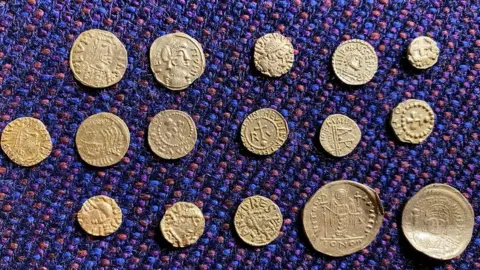 Martin Giles/BBC
Martin Giles/BBCThe largest "internationally significant" hoard of Anglo-Saxon gold coins found in Britain is due to be valued and could command a sum of up to £400,000, an expert said. Some 131 coins were declared treasure last month, and Norwich's Castle Museum, which has been keeping 16 of them, is hoping to buy them all.

Where were they found?
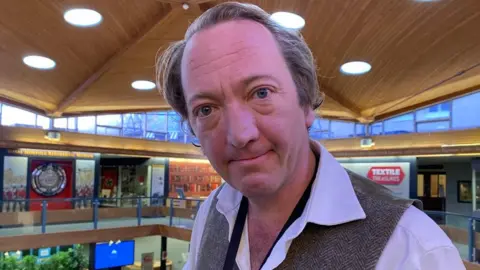
The hoard was found in a field in west Norfolk, most of them by the same metal detectorist.
"We've not seen anything like this in Britain, ever," said Dr Adrian Marsden, a numismatist from Norfolk County Council's Historic Environment Service, who described them as "internationally significant".
The first coin was uncovered in 1991, but it was not until 2014 that detectorists began discovering further coins.
They were dated to about AD610 - the same period as the Sutton Hoo ship burial in Suffolk.
Ten coins were found by a serving police officer who tried to sell them and was jailed for 16 months.
The precise location of such finds were usually kept secret to protect a landowner's property.

What do we know about the items?
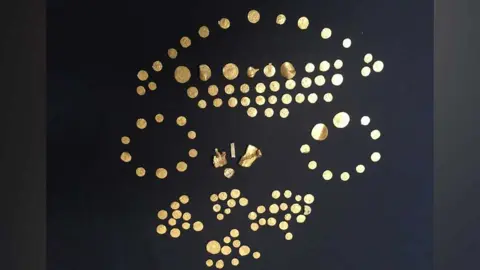 British Museum
British MuseumAccording to Mr Marsden, the hoard was "exceptional", especially since these types of coins were not usually in circulation in Britain at the time.
"All the coins were minted on the continent, as we didn't have gold coins of our own then," he said.
Some were minted in the Byzantine empire, whose capital was Constantinople (now Istanbul), but most were from the Merovingian kingdom, which broadly corresponds to modern-day France.
The hoard includes coins struck in the same workshop as those found in a purse at Sutton Hoo, Dr Marsden said.
A stamped gold pendant, a gold bar and two other pieces of gold were found at the same time, suggesting the hoard should be seen as bullion - gold valued by weight rather than face value.
Dr Marsden said people in Britain used bullion, which were cut-up bits of precious metals, to pay for transactions.
"It offers a wonderful viewpoint on what sort of coinage was circulating," said the coin specialist, who added that the hoard probably belonged to a merchant.
"It seems to have been built up by someone moving around the Merovingian kingdom," he said.
"And as it was found near an Anglo-Saxon cemetery, it may have been buried in a barrow [burial mound] and scattered by centuries of ploughing."

What is treasure?
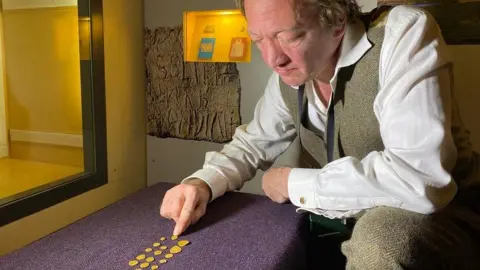 Martin Giles/BBC
Martin Giles/BBCTreasure is defined by the Portable Antiquities Scheme as:
- Any metallic object containing 10% precious metal (gold or silver) and at least 300 years old
- Any two metallic objects of any composition of prehistoric date found together
- Two or more coins from the same find containing 10% precious metal and at least 300 years old, or at least 10 coins if the precious metal content is less than 10%
- Any other object found along with an item that has been declared treasure
Discoveries of such archaeological finds must be reported to a local finds service who use their experience to find out more information and date the items, before informing a coroner.
The law states only a coroner can declare items as treasure following an inquest.
All but one of the 132 gold coins discovered in Norfolk were declared treasure.
The first single coin, found in 1991, was legally sold by its finder, as it was believed to have been a single item at the time, said Mr Marsden.
"When more coins turned up, it was clear we were dealing with not one stray loss, but a hoard," he said.
Items deemed as treasure must be offered to a museum to purchase, but should no-one declare an interest, they can be returned to the finder.
The treasure is valued by the government's Treasure Valuation Committee, so that museums can reimburse the finder. This aims to encourage detectorists to declare their finds for the benefit of the nation, rather than keep them to themselves, or sell any finds on the open market.
Detectorists need permission to search on private property, and any proceeds are usually shared with the landowner.
According to the law there's an unlimited fine or up to three months in prison for not reporting treasure.

What happens next?
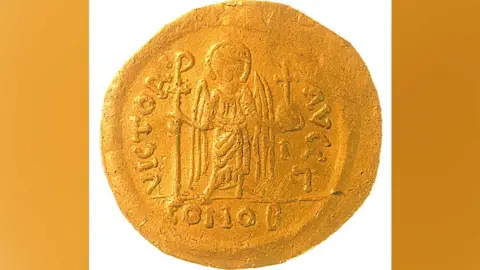 Norfolk Identification & Recording Service
Norfolk Identification & Recording ServiceThe 16 coins at Norwich Castle Museum will join the rest of the hoard at the British Museum, while the Treasure Valuation Committee carries out its work.
This could take another six months, according to the Castle Museum's curator of archaeology, Tim Pestell.
Once all parties involved are happy with the valuation, including the landowner and finder, the items can be offered for sale to museums.
According to Mr Marsden, it was difficult to place a value on the hoard, but he said "the retail value for coins like this is generally around £2,000 to £3,000 each, but that's a rough price".
The Castle Museum was hoping to acquire the items once the valuation was completed, and would usually have up to four months to raise the necessary funds, but "longer if the museum is making progress with fundraising, but needs more time", said Mr Pestell.
He said if the museum did buy the artefacts "we would obviously be wanting to display the hoard and it would feature within our permanent Anglo-Saxon gallery".
"The length of time that takes is usually dependent upon whether there is an available case or a new one needing to be made and installed, whether there are funds for this, and indeed if anything needs conserving first," he said.

Is gold the ultimate find?
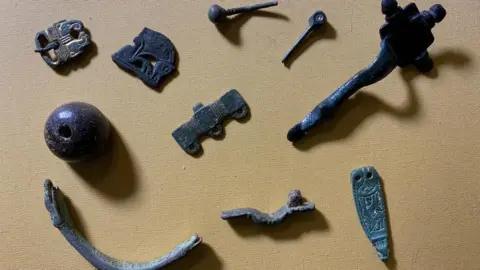 Martin Giles/BBC
Martin Giles/BBC"People are finding things with metal detectors every day, but this [coin hoard] is exceptional," said Mr Marsden.
But he also believed "lumps of clay" can often tell us just as much, if not more, about a period.
"This hoard on one level is just a pot of gold buried by someone rich," he said.
"If you find, for example, Roman tiles on a field, you can be sure there's a Roman building there, and perhaps even a settlement, so on one level that's far more important.
"Equally what appears to be very mundane can tell us more than something very fancy, it's not all that glitters, necessarily."
Last week, details were revealed of the discovery of a Roman mosaic in Rutland.

Find BBC News: East of England on Facebook, Instagram and Twitter. If you have a story suggestion please email [email protected]
